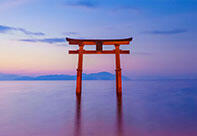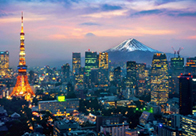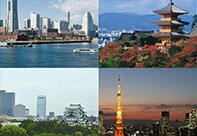Articles
Japan Rolls Out Red Carpet to Business
Events Decision-Makers
With Japan once again open to business event groups, the Japan National Tourism Organization (JNTO) in early December invited seven representatives of influential professional congress organizers from around the world to visit some of the nation's newest and most innovative meeting facilities, unique venues and stunning accommodation options.
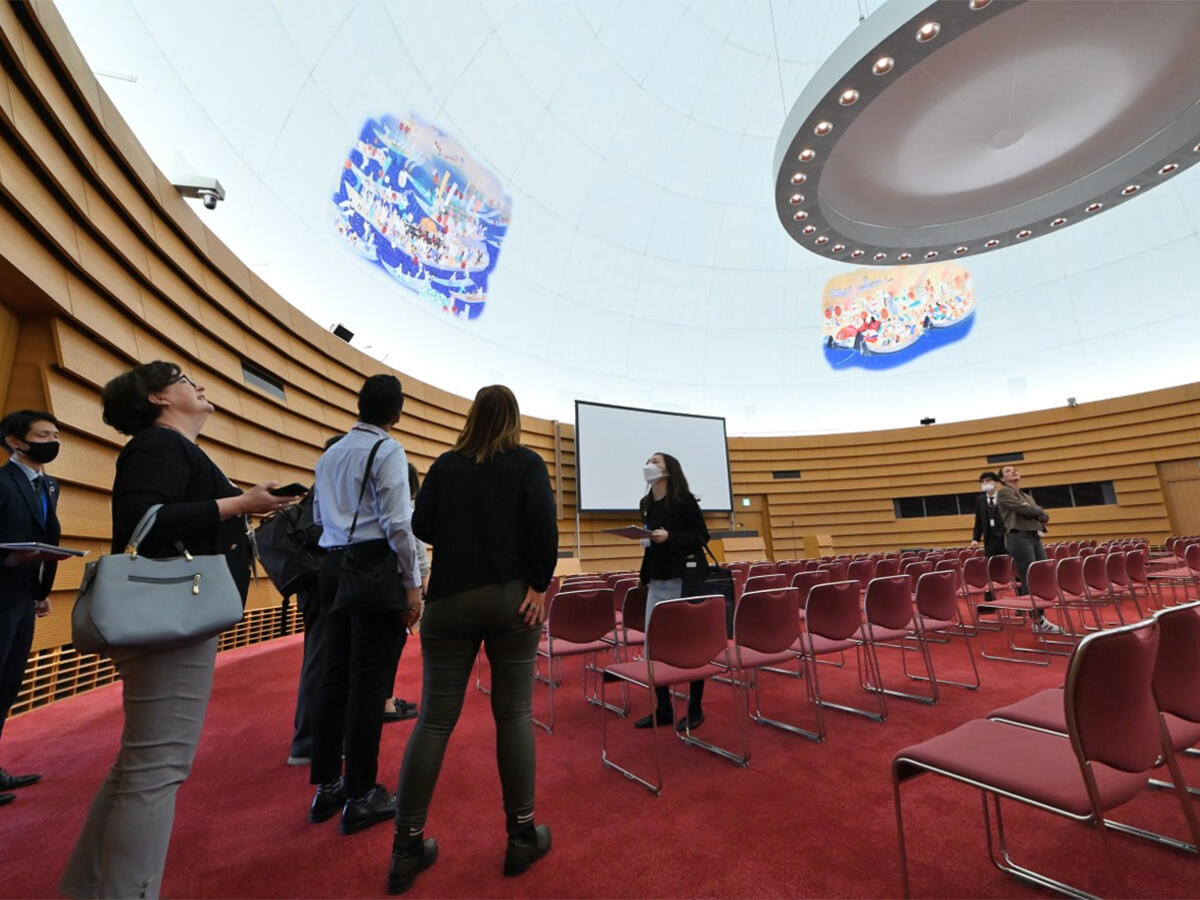
The participants were divided into two groups, with the East group, from Bulgaria, Italy and Australia, visiting Tohoku and venues in and around Tokyo. The four members of the West group, from Canada, Germany, Portugal and Singapore, explored the latest business event enhancements and new opportunities in the cities of Osaka, Nara and Kyoto.
The West group, all visiting Japan for the first time, acknowledged from the outset that they had some preconceived notions about Japan and what it might be able to offer in terms of professional event opportunities. By the end of the trip, however, they declared themselves to be deeply impressed by the professionalism and advanced services that Japanese venues provide.
The four professionals were equally delighted at the warmth of the welcome they received - and all said they already had in mind a client organization that would be wowed by what Osaka, Nara or Kyoto had to offer.
Osaka - Japan's second city shows off its attributes
The largest city in western Japan, Osaka is an economic and industrial powerhouse that has nonetheless preserved much of its traditional culture. Residents revel in their reputation for being vibrant, broad-minded and having a unique sense of humor. The neon signs of Dotonbori mark the heart of the city and local specialties include "takoyaki" octopus dumplings and "okonomiyaki" savory pancakes.
On the first day of the trip, as a welcome to Japan, little could surpass the four participants opening the curtains in their rooms at Hotel New Otani Osaka to be faced with the imposing facade of Osaka Castle, topped with its roof's iconic metalwork that glittered in the morning sun.
"The castle is simply an iconic landmark in the heart of the city and it makes a lot of sense to put it at the center of the MICE campaign here," said Ash Abdullah, manager of projects and operations in the Singapore office of International Conference Services.
Adjoining the castle is The Landmark Square Osaka, a unique venue that offers elegant banquet facilities and a rooftop space with unrivaled views across the city. Originally constructed in 1931, the building recently underwent a comprehensive renovation that melds the original classic architecture with more contemporary decoration and facilities.
The newly opened Nakanoshima Museum of Art, Osaka provides a second location capable of hosting large-scale events. Guests can network while also admiring the modern works of art for which the venue has become renowned. Additionally, this unique venue is within walking distance of the Osaka International Convention Center (also known as Grand Cube Osaka). With 25 conference rooms and situated in the heart of the city, the Center has direct links to Nakanoshima Station and has hosted countless major conferences and events.
Organizations planning an event in Osaka can call on a number of high-end hotels to meet their accommodation needs.
The 525-room Hotel New Otani Osaka has the largest ballroom in western Japan and views of the castle that are particularly spectacular during cherry blossom season in the spring. The Rihga Royal Hotel Osaka, adjacent to the Osaka International Convention Center, can serve meals that meet specific dietary requirements and has four guest rooms with traditional tatami mat flooring. The InterContinental Osaka is a newer addition to the city's skyline, just five minutes on foot from Osaka Station and with a Michelin-starred restaurant.
"It is clear that Osaka is a top-tier destination for both leisure and business travelers and I have been really impressed by the standard of customer service," said Abdullah. "Obviously, this is something that Japan is famous for, but I was still impressed to see it for myself.
"The city has also made a real effort to be more visitor-friendly, with signage in several different languages," he pointed out, suggesting that will be a significant benefit when Osaka hosts the World Exposition in 2025.
"To me, Osaka has a nice blend of the traditional and the ultra-modern, but I did not find the city too overwhelming and I think delegates to an event here will love to explore the city."
Nara - Ancient capital delivers 'wow factor'
A little over 30km from central Osaka, Nara was the first capital of Japan and has carefully protected the shrines, temples and other historical monuments that have seen it recognized by UNESCO as a World Heritage site. From Osaka, the city's event facilities are easily accessible by road and rail.
Leaving participants charmed by the deer roaming through Nara Park and impressed by the scale of Todai-ji Temple and the colossal statue of the Buddha that it houses, the second day of the inspection visit took place in Japan's ancient capital, Nara. The group visited two international convention centers and a newly opened luxury hotel.
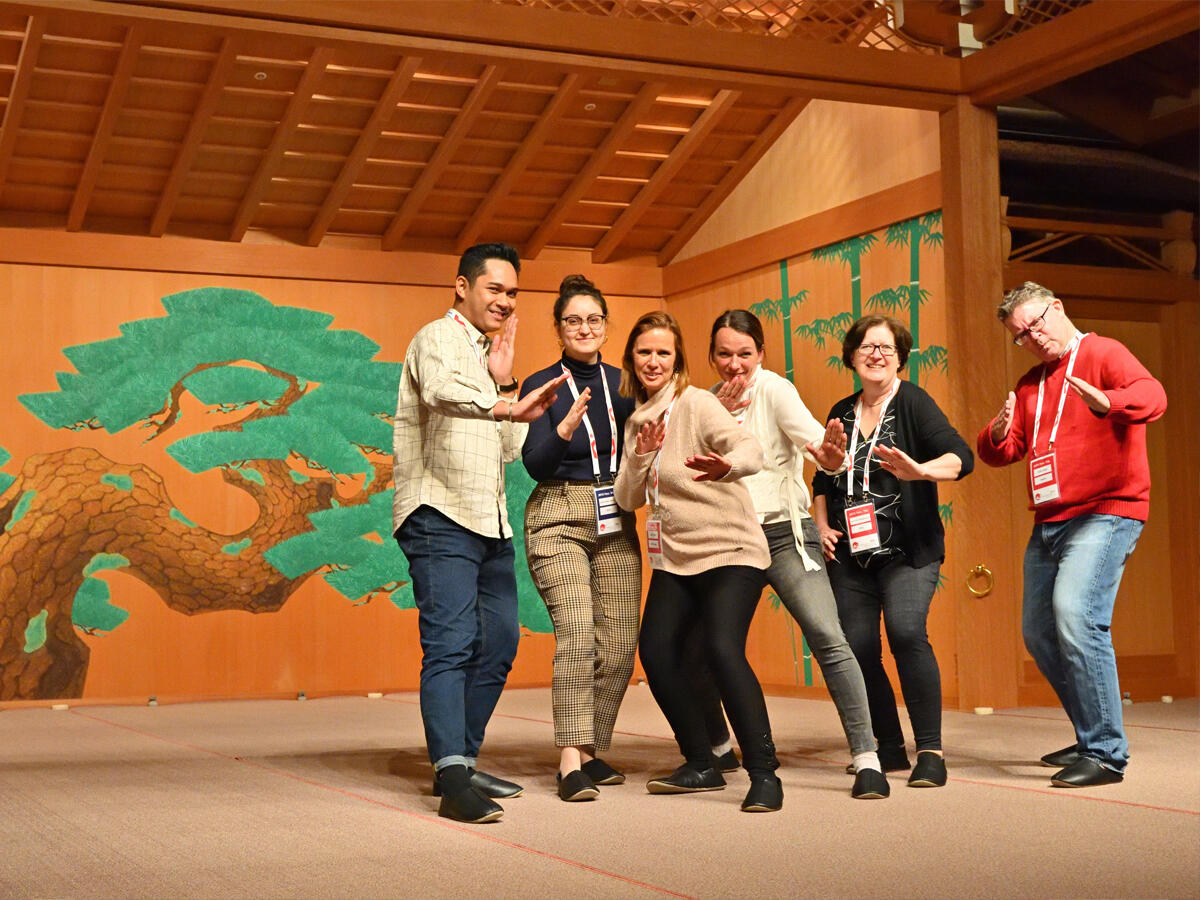
The Nara Kasugano International Forum, also known as IRAKA, is located in the vast Nara Park, adjacent to the Todai-ji Temple and Kasuga Taisha Shrine, which were declared a UNESCO World Heritage Site in 1998 as Historic Monuments of Ancient Nara. On a hillock backed by rising foothills, the facility is equipped with eight spacious conference rooms and two reception halls, and overlooks the stunning Todai-ji Temple. The participants were greatly inspired by the Noh theater, which is an integral part of the complex, and the immaculately tended gardens surrounding the property. Groups can use the gardens during events, and an option of an exclusive after-dark visit to Todai-ji Temple can be further arranged upon request.
The Nara Prefectural Convention Center, which opened in April 2020 and hosted the four-day UNWTO World Forum on Gastronomy Tourism in December 2022, enjoys a convenient location in the center of the city alongside the bus station, with direct links to Kansai International Airport and the recently opened JW Marriott Hotel Nara.
The Center's main convention hall - eye-catching both due to its extensive use of attractive wood and the most up-to-date event innovations - offers a 2,100 square meter space ideal for everything from exhibitions to meetings, lectures and parties. The facility also has a number of meeting rooms that can be flexibly combined to meet an organization's specific requirements.
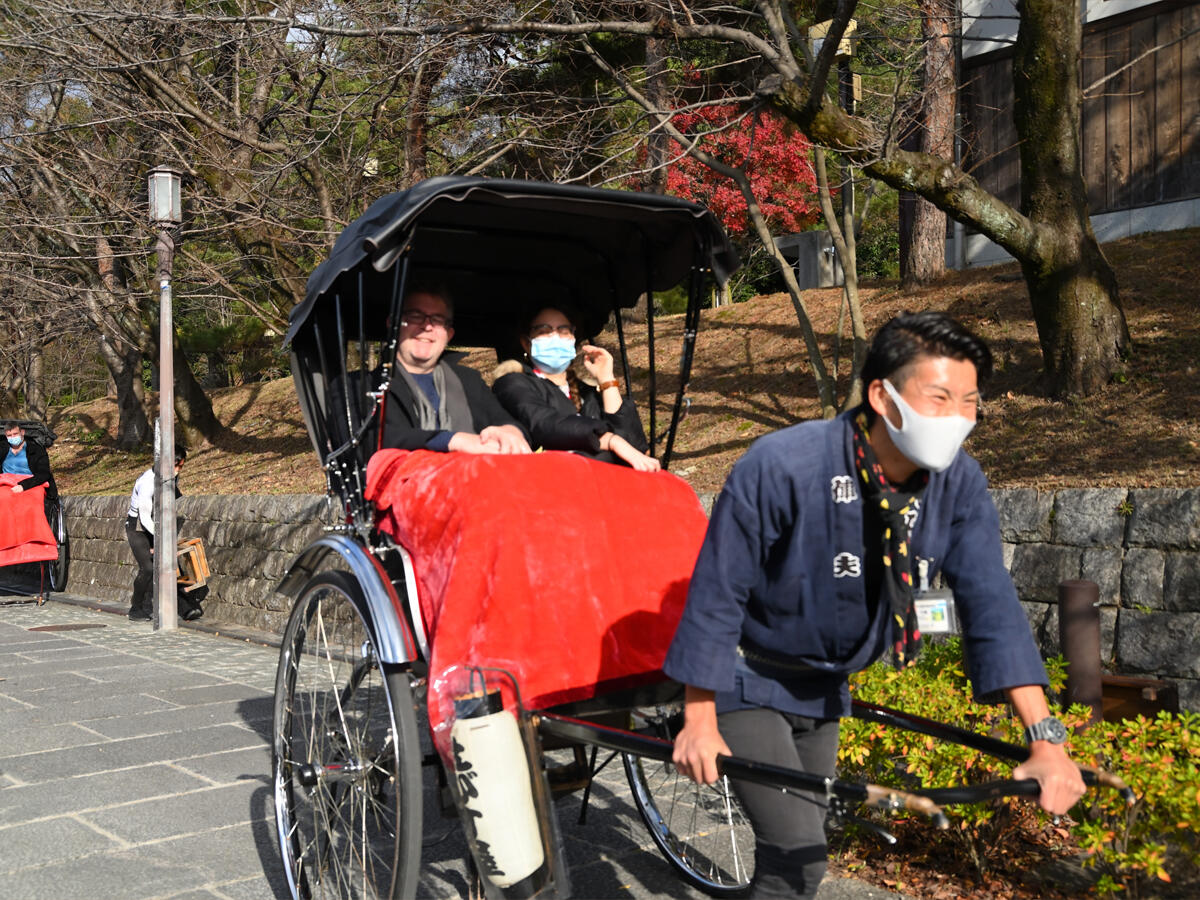
The Tempyo Hall is a versatile space that can roll out tiered seating and is equipped with state-of-the-art cinema and sound systems. The convention center also has on-site retail outlets and a covered area for outdoor events.
Adjoining the Center is JW Marriott Hotel Nara, the first international luxury hotel in Nara and the very first JW Marriott property in Japan. The 158 beautifully appointed guest rooms and the bar and restaurants all feature motifs inspired by the city and its natural surroundings. Complementing the conference center, the hotel has several elegant banquet spaces.
"Nara will just pop with my clients," said Nelia Fonte, senior project manager in the congress unit of AIM Group International.
"Our clients are associations whose members want to work at these events but also want to learn and experience new things about the culture, the history and traditions of the city they are in," said Fonte, who is based in Lisbon.
"They also want to be involved in the community that they are visiting and I am certain that Nara would provide a very enriching experience for visiting groups," she said. "In fact, I cannot remember another venue that I have visited with such a wonderful setting and such fantastic facilities."
Kyoto - Ancient capital surprises event experts with culture, facilities
Synonymous with sumptuous traditional art, design, culture and another former capital city, Kyoto has similarly preserved the religious and natural venues that are such a magnet to overseas visitors. From the back streets of the Gion historic quarter to stunning temples, towering bamboo groves and a fascinating green tea and "kaiseki" cuisine deeply integrated into the local culture, Kyoto never fails to impress.
Imposing in its scale and design, the Kyoto International Conference Center was in many ways a contrast to the other locations the event coordinators had previously visited in Japan - but just as appealing as a venue for MICE events.
Designed by architect Sachio Otani to a hexagonal plan and the confirmed 2025 host of the 15th International Congress on Cleft Palate and Related Craniofacial Anomalies, the facility opened in 1966 and is one of Japan's leading examples of its characteristic modern architecture. Including several additions to the original structure, the facility provides more than 156,000 square meters of meeting space focused on the dramatic main Conference Hall, where the Kyoto Protocol on climate change was signed in 1997. In addition to the three multipurpose halls, the facility has 70 conference rooms and a further extension is planned in the near future.
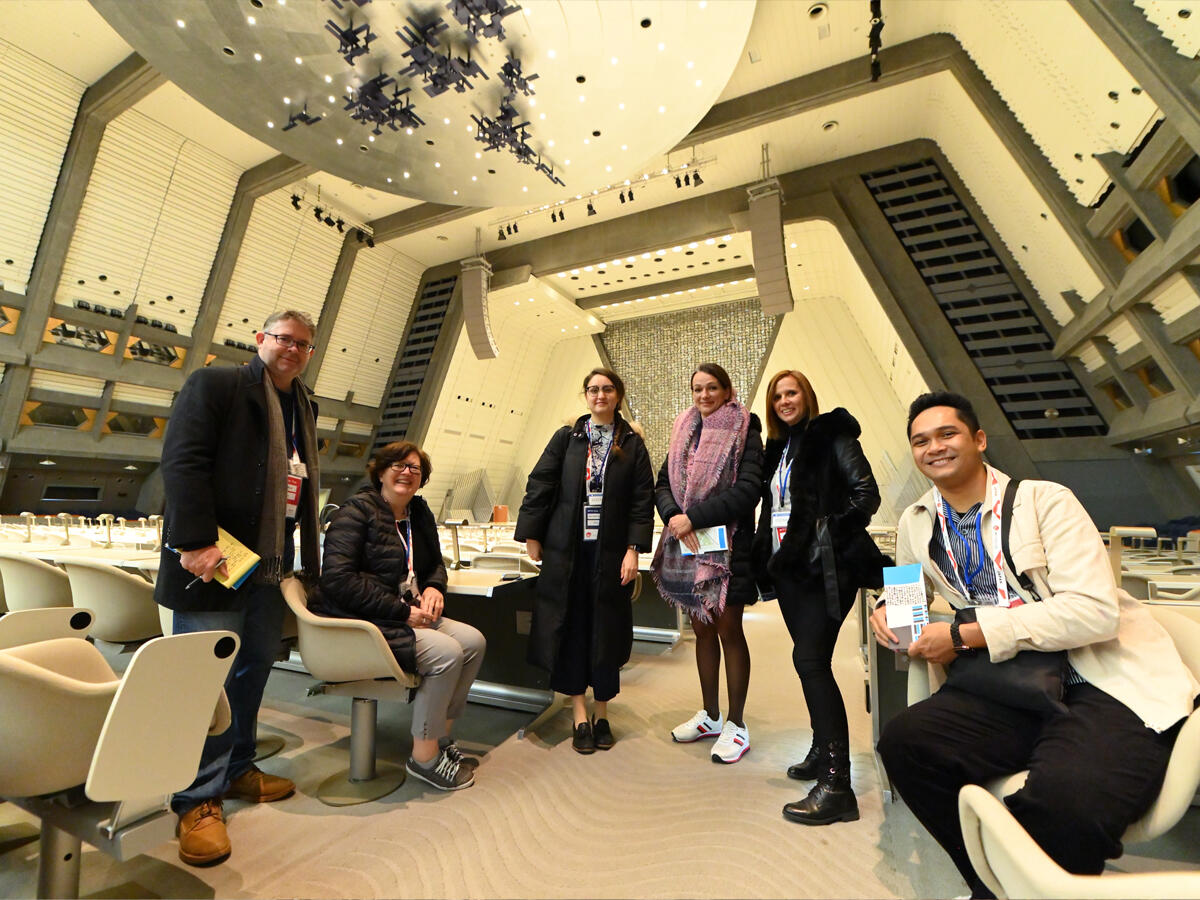
A short distance from the convention center, which has a dedicated subway station that links it with central Kyoto, is The Prince Kyoto Takaragaike Hotel. With a distinctive circular design, the property has 310 rooms across eight floors, a spacious main ballroom and a further six meeting and event spaces, including the striking Gold Room.
The Westin Miyako Kyoto, where our four participants stayed, has recently undergone a significant upgrade of its guest rooms, lobby and restaurants, while it can provide group check-in facilities for business event travelers and a range of event spaces in its west wing.
Given Kyoto's history and culture, it was appropriate that the group tried their hand at zazen meditation under the watchful guidance of the Reverend Daiko Matsuyama at Taizo-in Buddhist Temple. They also admired the temple's art treasures and beautiful gardens. The participants also enjoyed seeing the narrow back streets of Kyoto from traditional rickshaws.
In the heart of the city, the Kyocera Museum of Art provides a unique venue, with organizations able to hold events within Japan's oldest art museum. Events can utilize the facility's balconies, towers and traditional Japanese garden, as well as the elevated wood-floor terrace, which provides excellent views of the hills to the east of the city and is perfect for receptions.
On the banks of the Kamogawa River and on the fringes of the city's Gion district, the Le Un Funatsuru Kyoto Kamogawa Resort dates from 1925 and occupies the former home of a wealthy businessman. Sympathetically remodeled, it has a rooftop space, a terrace alongside the river, and banqueting facilities for select groups of up to 95 individuals.
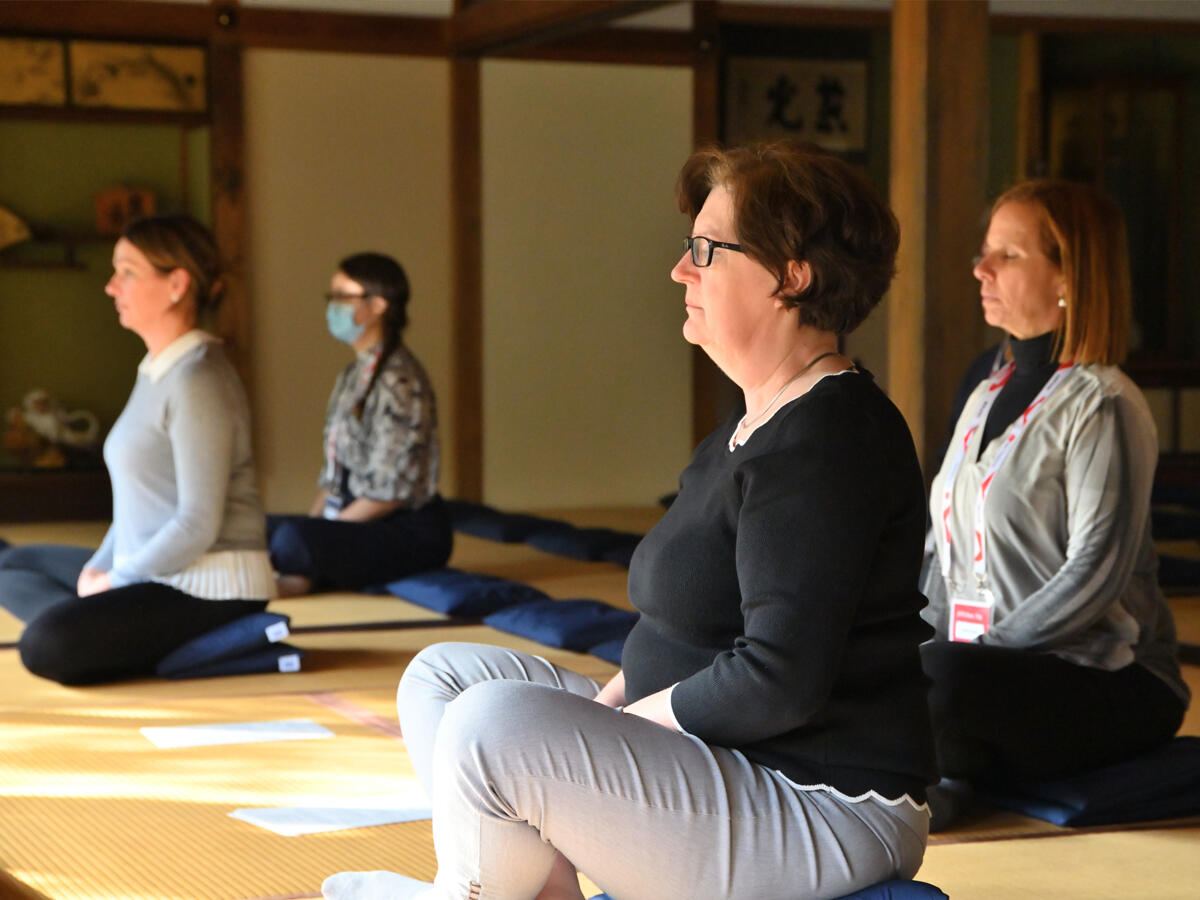
Another dining option is Sodoh, the former residence of a master painter from the early years of the Showa Era that has been transformed into a selection of traditionally designed properties set in a stunning walled garden of ponds, stone lanterns and raked gravel. The property can also provide space for musical events, meetings and other occasions.
'Overwhelming experience' wraps up in the capital
After arriving in Tokyo aboard a bullet train, the group went on to an evening reception that brought together officials from the business events sector from prefectures and cities across Japan at Happo-en, arguably the finest event venue in the city.
Carefully constructed around a sprawling traditional garden, a delightful pond and the Hakuhokan Hall, Happo-en has two tea houses, a garden chapel and a building with six banquet hall floors and meeting spaces. The guests were treated to a sumptuous meal and a tea ceremony demonstration and could network with Japanese business event providers and contacts.
On their last day in Japan, all overseas visitors stated that Japan had far exceeded their expectations.
"I have fallen in love with the country after just four days," admitted Gertrud Jeewanjee, Vancouver-based senior manager for projects for International Conference Services.
"Before I came, I feared it might be a little outside my comfort zone, but finding your feet takes no time at all and everything works so smoothly," she said. "Of all the places we visited, I would say that Nara was my favorite. It was a gem that I just never expected. As a destination, it is an absolute jewel."
In addition to being deeply impressed by the destinations and people she had met, Jeewanjee added that the trip had dispelled some myths about Japan that might make some travelers hesitant about visiting. The biggest surprise, she said, was to discover that the image of Japan being an extremely pricey place to visit is "completely incorrect," she said.
Nelia Fonte of AIM Group International echoed that conclusion and added that she had also been pleased to discover how accessible Japan is, even for long-haul travelers from Europe or North America.
"The entire experience has been far more impressive than I had expected," she said. "The level of service is absolutely amazing and left me feeling overwhelmed at times. That is certainly something that I will take home with me."
"And when I get back to the office, I am going to tell my clients about the quality of service, the kindness of the people, the ease of traveling between locations and the amazing facilities that are here and waiting to be used," she concluded.
By BOARDROOM
